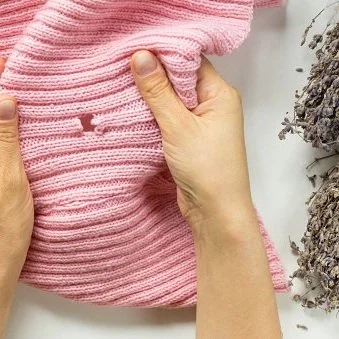These Fabric-Damaging Pests Could Be in Your Home
Pests are never a pleasant sight to see in your home. Besides the health risks they carry, they can also seriously damage home furniture, including different fabrics. Because fabric-damaging pests are on the smaller side, most people don’t notice them until they see damaged clothes, carpets, towels, etc. Let’s talk about the different types of pests that could be damaging your fabrics.
Carpet beetles
The majority of carpet beetles get into homes from the outdoors. Adults are excellent flyers, and the bright lights inside your house attract them. Many mature carpet beetles feed on flower pollen in their native habitat. They graze on dead animals, bird nests, rodent nests, and even old wasp nests as food for their larvae.
Adult carpet beetles vary in color from dull black to brown with brown legs. Other adults have white, brown, yellow, or black mottling. The larvae of carpet beetles range in size from 1/4 to 1/2 inch. Since the larvae can shed several times, an infestation may appear bigger than it is.
A female lays around 100 eggs, which hatch in a week or two. They dislike light and prefer to reside in quiet settings, unlike the male adults. Soiled textiles and holes and crevices filled with lint, food crumbs, or dead insects attract larvae as they feed on these sources.
Clothes moths
Adult species of the casemaking clothes moths and webbing clothes moths are buff-colored and resemble each other. Larvae are roughly 1/3 inch long when fully developed. The casemaking larvae live in silken cases that they pull along while walking.
Female moths lay between 100 and 150 little, pinhead-sized white eggs on or near the cloth they infest. In most cases, eggs hatch in around five days.
The duration of larval development varies widely depending on the species and their living environment. It can range from six weeks to many years. The larvae are the ones who wreak havoc on materials.
Clothes moth larvae do not usually roam like carpet beetle larvae, although you occasionally spot them on textiles eating dust or other animal-derived items. The larvae eventually pupate in a silken casing. In one to four weeks, the adult moth emerges from the pupa. Adults do not feed, and lights don’t attract them.
Get rid of these fabric-hungry pests!
Sanitation is the most effective method to avoid a significant infestation of these parasites. You should wash all items vulnerable to invasion before storing them in plastic bags or containers. Vacuum areas beneath your furniture and along baseboards regularly to minimize the quantity of dust, lint, hairs, and other organic debris.
For a carpet beetle or clothing moth infestation, specific pest control treatments can help get control of the situation along with the mentioned cleaning procedures. However, the best solution is to call a professional exterminator with severe pest infestations. This way, you can ensure that the infestation is safely and wholly exterminated.
Kinder Safe Pest Solutions provides a range of residential pest control solutions, including bed bugs control, termite control, ant control, roach control, spider control, flea control, mosquito control, rodent control, tick/mite control, wasp control, and preventative measures. We are licensed and ensure prompt response. Call (941)254-2180 today!

